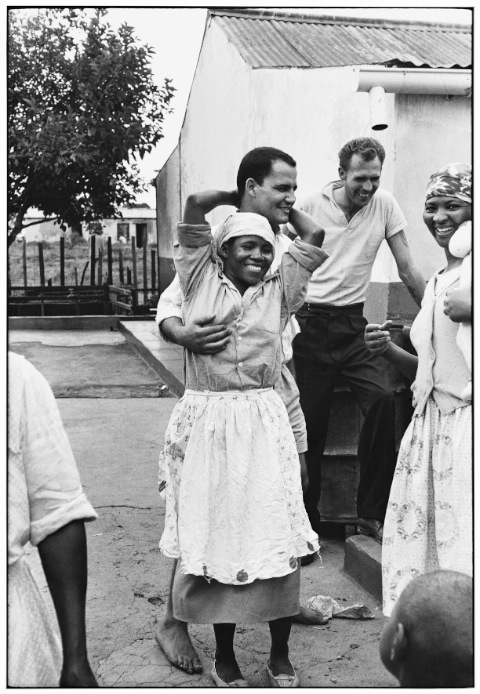Ernest Cole (1940-1990) was a black South African photographer born eight years before the National Party came into power. Cole was born in what is now called Eersterust, in Pretoria East, as Ernest Levi Tsoloane Kole. After the implementation of Bantu Education in South Africa, an education system put in place to (mis-)educate millions of black Africans, he left school and finished his 12th year via correspondence.
His interest in photography began at a very young age. After leaving school, he became an apprentice to a Chinese photographer and then went on to work for South Africa’s first black magazine, Zonk!. His big break, however, came in 1958 when he joined Drum magazine, working under Jürgen Schadeberg, who was then head of photography. This is where he is said to have been politicised. Cole also started a correspondence course with the New York Institute of Photography. With their support, he decided on a project which entailed recording the evils and social effects of Apartheid.
In order to carry out this project, he would have to have more freedom of movement. Cole was extremely fluent in Afrikaans and was reclassified as coloured under the Population Registration Act after he straightened his hair and replaced the ‘K’ in his last name with a more Anglicised ‘C’. His newly acquired racial status also meant that he could move in and out of the country more easily.
To get his images, Cole devised unique techniques and took great personal risks. For example, to photograph in mines and prisons, he carried a brown bag disguised as a lunch box with his camera in it. He captured images through a small hole in the bag.

Before leaving gold mines, men had to be examined by a medical doctor to ensure that they were not smuggling out pieces of gold in even the most intimate parts of their bodies (note the sink).
He eventually caught the attention of special branch police, some of whom were suspicious about his identity. He could not sleep in his own home because he was a wanted man.

Sly pick-pockets: black men back then knew that the best way to annoy a white man was to give him a condescending tap under the chin. A good distraction while your friend nicks his wallet.
In 1966, he finally fled for New York and took his Apartheid project prints with him. He showed his work to Magnum Photos which resulted in a publishing deal with publishing rights owned by Random House. The book, House of Bondage, was release the following year, in 1967. It was banned in South Africa as soon as it came out.
Later he received a grant from the Ford Foundation for another book, A study of the Negro family in the rural South and the Negro family in the urban ghetto. This was never published although he did take a number of photographs. Cole then moved to Sweden where he took up film-making.
As he battled pancreatic cancer during a scattered life in exile, Cole watched the release of Nelson Mandela from prison on February 11 1990 lying on his death bed in New York. He died a week later having just seen his mother for the first time since he left South Africa 23 years earlier.
Sources (of both images and text):
- Life through the lens, retrieved: 25 December 2012
- Ernest Cole,. House of Bondage. New York: Random House. ISBN 0-394-42935-4
- Ernest Cole Dies at 49; Recorder of Apartheid, retrieved: 25 December 2012
- Dugger, Celia W. (2010-11-17), Homecoming for Stark Record of Apartheid, retrieved: 25 December 2012
You may also want to read about:
Gordon Parks: African American photographer famous for his pictures of America in the 1950s and ’60s. (Abagond article)





Such a wonderful blog and edifying post. Thank you for this, I loved the photographs. Please keep it up.